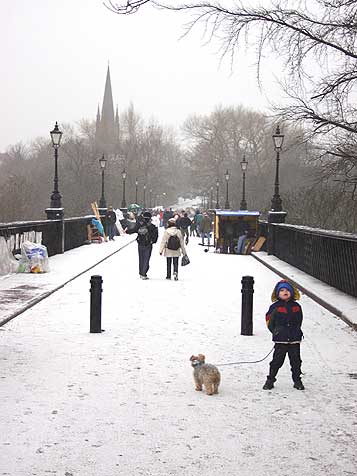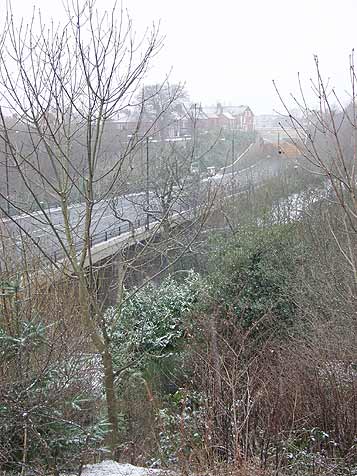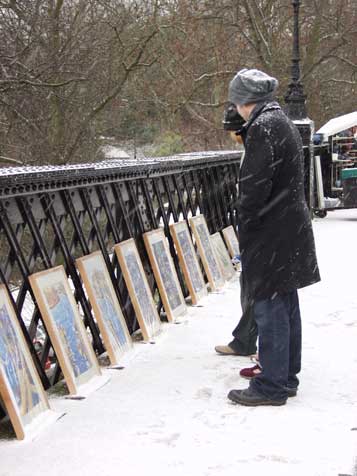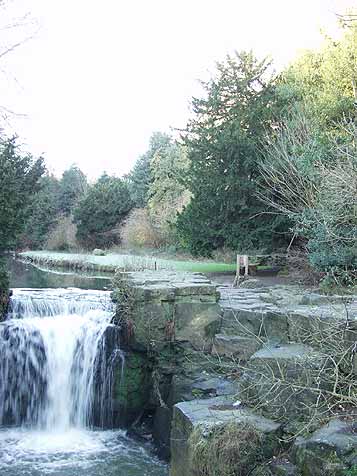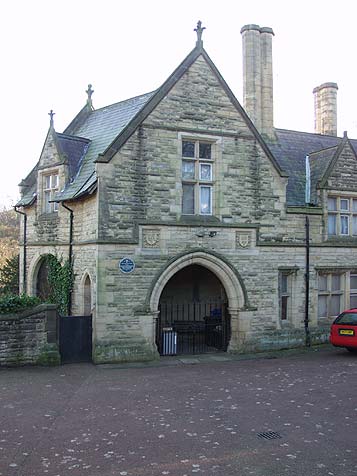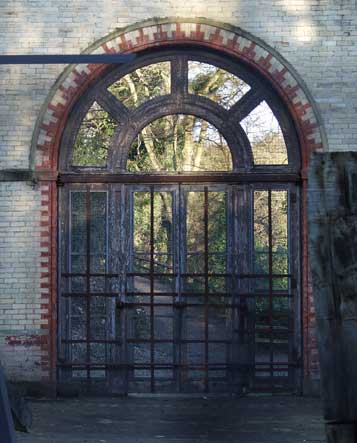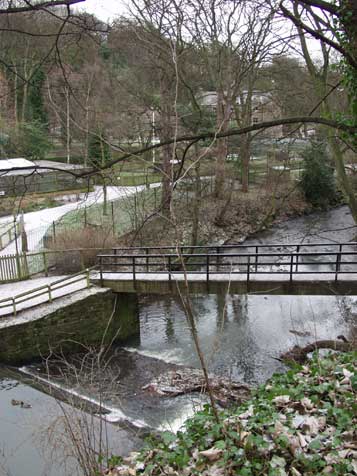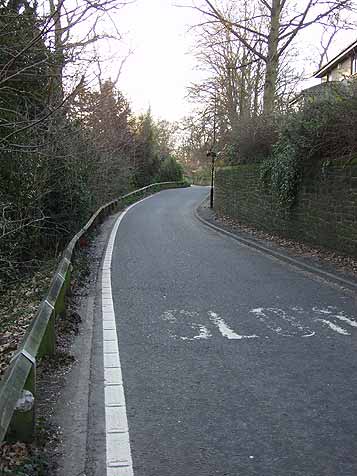|
Jesmond Dene
Sun 30th Dec., 2001
|
 |
 |
|
Millions of years ago glaciers carved out a steep valley that became the course for the Ouse Burn as it flows from
the north to the River Tyne.
In 1835 just before his marriage, the 25 year old William George Armstrong, later to
become Lord Armstrong, built his grand house on the edge of the steep valley. Later, his Elswick armament works needed a firing range to test the new guns developed after the Crimean War
and he carried out firing sessions in the ravine. Later, having bought the whole valley, he landscaped it and gave it to the citizens.
This is Armstrong Bridge that crosses the valley at the south and hosts a Sunday morning craft sale. |
|
|
|
|
|
 |
 |
|
The main road used to dip steeply and was the site of many winter accidents. I recall a truck running out of control
coming down the steep hill out of town in 1978 and colliding head on with a double deck bus. The bus was scrapped, and the driver, Victor van der Piken, spent months in hospital and years afterwards
recovering, and was never again fit enough to drive.
This new road and tunnel, The Cradlewell By-pass, was the subject of much protest at the time of its being built during the mid 1990s, but the
levelling and widening of the road access at this point has certainly cut accidents, although it does nothing to speed up the flow during the morning peak, as there is a bottleneck on the other side of that
tunnel. |
|
 |
|
In 1963 Armstrong Bridge was closed to traffic and an art and crafts market sprang up. The council claimed poverty in
1975 and recommended demolition. It was forced by public pressure to carry out repairs, and even then put it off for a further eight years.
The bridge was first opened in 1878, and two years later
Armstrong landscaped the valley to the south of this point and gave it to the city.
Armstrong had bought most of what is now Jesmond Dene by 1862. His wife planned the landscaping of the valley.
The uncultivated and straggling wilderness was transformed in a year to a beautiful park with weirs and pools in the river, bridges and pathways, and by establishing many plants and shrubs introduced from
abroad. |
|
|
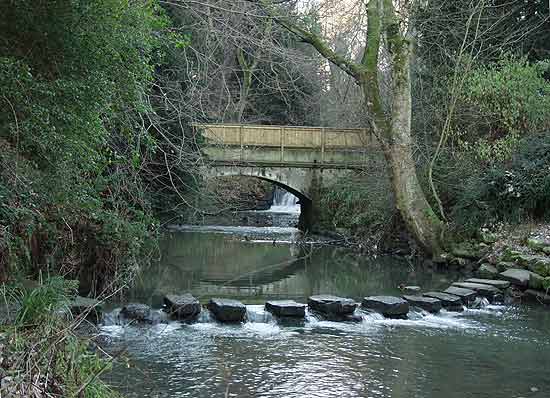 |
 |
|
The stepping stones and the 1889 bridge were, until 1931 the northern boundary to the park. Lady Noble, owner of the
land from here to Castles Farm, died in Jesmond Dene House and bequeathed the estate to the city.
A further extension was made in the 1970s to South Gosforth.
Lady Armstrong split the river
into a series of still pools by weirs and waterfalls. This one is situated near the remaining mill, now preserved as a rustic ruin.
That flat area to the right that looks like it could be a mill race
is an artificial structure. Hooks and holes are visible on close inspection, and show how the blocks were lowered into position. |
|
|
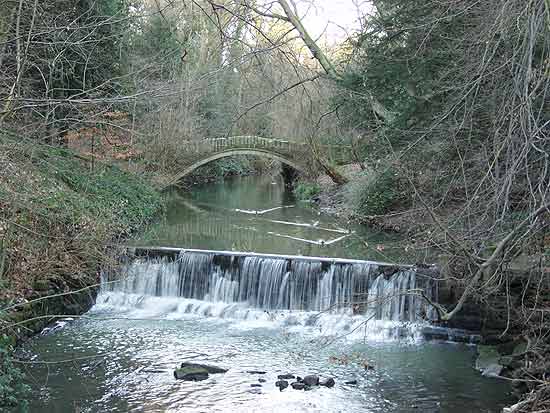 |
|
|
 |
 |
|
Lord Armstrong found that his already grand house, Jesmond Dean, was not big or palatial enough for his illustrious
and Royal visitors. In 1861 and 1862 he busied himself putting up a Banqueting Hall.
He engaged John Dobson as architect, included many statues and paintings, and featured a water driven organ, using
the pressure from Paddy Freeman's lake, a fall of about 15 metres.
The Lodge and gatehouse pictured left was added later in 1870, and is still in use today by an arts business.
This was
originally the site of the Apple Tree Inn, that was relocated to Jesmond Grove. |
|
 |
|
The old banqueting hall is now open to the elements following the loss of its roof during the mid 1970s.
The
city council refused to perform the necessary repairs, claiming lack of funds in 1977 and it was left to crumble. It is used as a storage area for local stonemasons and is a Grade 2 listed building.
Each end of the main hall had a magnificent arched window like the northern one pictured here. Alcoves in the walls between held Greek statues, and an army of servants carried the food from the now
vandalised and ruined kitchens to the groaning oak table. Later, the table was moved aside for dancing and summer promenades on the neat terrace nearby. |
|
|
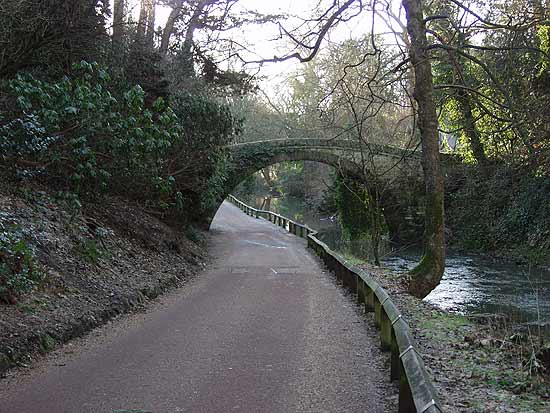 |
|
|
 |
 |
|
Above is the footbridge leading from the main pathway, Red Walk, to the Banqueting Hall. Just beyond this south
facing view is the Fisherman's Lodge restaurant. This is on the site of an old grain mill, Heaton Cottage, later converted to flint milling. In 1861 it was converted to a residence for Andrew Noble, and
renamed Deep Dene House. The Nobles moved to the larger Jesmond Dene House in 1871 and it was converted to a restaurant in 1900.
Cherry Walk crosses the wooden bridge adjoining Pets' Corner, converted
from Busy Cottage Iron Works. The river here was home to a colony of swans until 1991. The birds were the constant focus of stone throwing teenagers that the council chose not to round up and punish. |
|
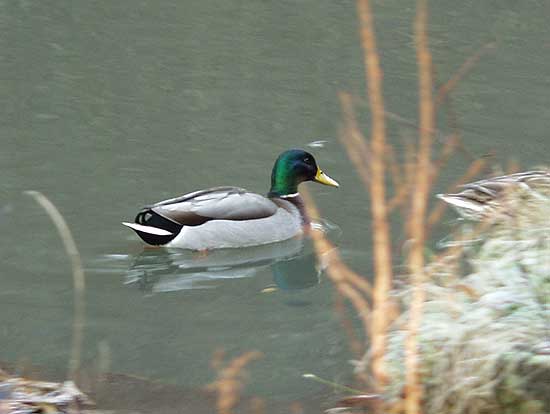 |
|
|
 |
 |
|
The ducks still thrive on the river here, and the vandalism has subsided. It seems perverse that the council has in
the past used the excuse of no money to allow destructive children to run riot, yet finds cash for the repairs in part, and most alarmingly, a posse of motorised wardens to scoop up wayward dogs.
Jesmond Dene Road leads along the Western edge of the Dene. It was a track that Armstrong strengthened and straightened during his works, allowing access to his house, now built over by Glastonbury Grove.
This artificial rustic area has suffered neglect during the 1970s and 80s, but it is now restored more to its 1883 glory when Armstrong gave it to the city. The council's neglect is manifest in the sad
condition of the Banqueting Hall. |
|
 |
 |
|
Site and contents (unless otherwise stated) © Tim. Pickford-Jones and Timmonet, Newcastle upon Tyne,
United Kingdom. |
|
 |
|
|
 |
|
If you should arrive here via a search, or be missing the navigation on the left hand side, click this button.
|
|





